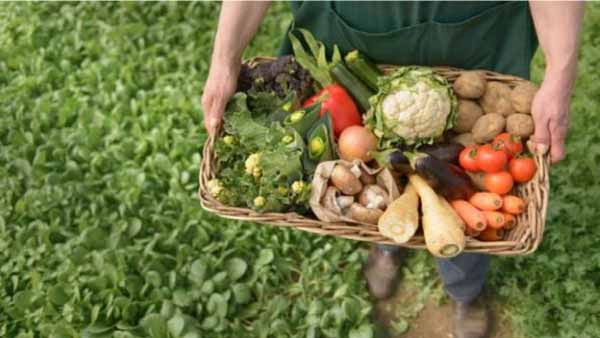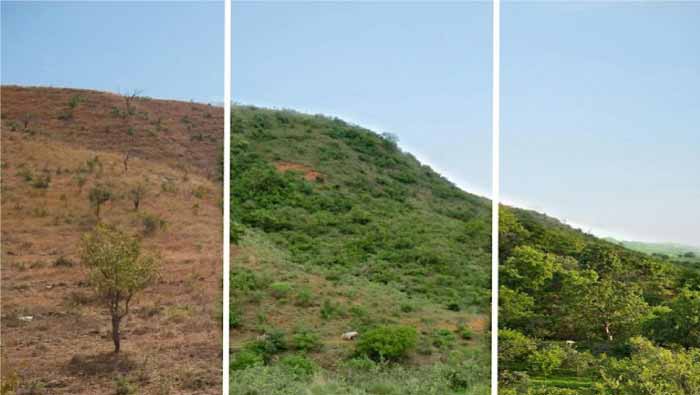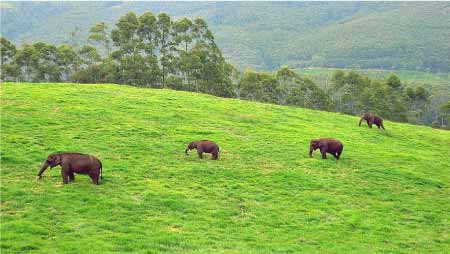Sustainable agriculture is an approach to agricultural production that focuses on maintaining soil health and productivity, conserving natural resources, promoting biodiversity, and improving the quality of life of farming communities. It seeks to produce food profitably and sustainably in the long term, without harming the environment.
To achieve sustainable agriculture, agricultural practices that respect natural soil processes, reduction of the use of agrochemicals, crop diversification, crop rotation, integrated pest and disease management, conservation of water resources and the use of renewable energies are used.
Sustainable agriculture focuses on the use of techniques and technologies that minimize environmental impacts and maximize resource efficiency, helping to reduce the carbon footprint and combat climate change. It also promotes the use of practices that foster social equity and inclusion of rural communities, as well as collaboration between farmers, consumers and other actors in the food system.
Sustainable agriculture is an approach that adapts to local conditions and farmers’ needs, which means it can take many forms and variants. Overall, it is an approach that seeks fairer, healthier and more equitable agriculture, taking into account global challenges and local needs.
Producing food profitably and sustainably
Producing food profitably and sustainably is a key goal of sustainable agriculture. It seeks to balance the need to produce enough food to feed a growing population with the need to maintain natural resources and minimize environmental impacts.
To achieve profitable and sustainable production, techniques and technologies are used that maximize the efficiency of resources, such as energy, water and soil nutrients. Agricultural practices that promote soil health, biodiversity and water quality are also sought.
Crop diversification and crop rotation are key practices in sustainable food production. These practices help reduce soil erosion, increase soil fertility, reduce the need for chemical pesticides and fertilizers, and promote biodiversity in the agricultural landscape.
Other practices used to produce food profitably and sustainably include integrated pest and disease management, biological control, precision agriculture, and the use of high-efficiency irrigation and fertilization technologies.
Overall, producing food profitably and sustainably involves a combination of agricultural practices, technologies and business approaches that seek to maximize productivity and profitability in the long term, while minimizing environmental impact and protecting soil health and biodiversity.
Maximize resource efficiency
Maximizing resource efficiency is a key goal in sustainable agriculture, as it makes it possible to produce food profitably and sustainably. It seeks to use resources more efficiently, which means getting more output from the same resources or using fewer resources to get the same output.
Sustainable agriculture uses techniques and technologies that maximize resource efficiency, such as water, soil nutrients and energy. For example, efficient irrigation practices, such as drip irrigation or precision irrigation, are used to reduce the amount of water needed to irrigate crops. Soil management practices that improve water and nutrient retention, such as composting and crop rotation, are also used.
Another way to maximize resource efficiency is through the use of precision technologies, such as remote sensing systems and geographic information systems (GIS), which identify areas of the field that need more or less water or nutrients. Monitoring and control technologies such as soil moisture sensors and automated irrigation control systems are also used, which allow the amount of water and nutrients applied to be adjusted according to the specific needs of each plant.
In general, maximizing resource efficiency involves using agricultural practices and technologies that allow more food to be produced using fewer resources, helping to reduce production costs, minimize environmental impact, and improve the sustainability of food production.
Efficient irrigation practices
Efficient irrigation practices are an important aspect of sustainable agriculture, maximizing water use efficiency and reducing the environmental impact of food production. Some efficient irrigation practices include:
Drip irrigation
This method of irrigation uses porous tubes or hoses that release water directly into the soil near the roots of plants. This method minimizes water evaporation and surface runoff, meaning less water is used and the risk of contamination of nearby water bodies is reduced.
Sprinkler irrigation
This method of irrigation uses nozzles to spray water into the air so that it falls on crops in the form of rain. Sprinkler irrigation systems can be high or low pressure, and must be designed to minimize evaporation and runoff, allowing water to infiltrate the soil more effectively.
Irrigation scheduling based on plant demand
This irrigation approach relies on measuring soil moisture and observing plants to determine when and how much to water. It is a more precise and efficient irrigation method, since it adapts to the specific needs of each plant.
Soil management
Proper soil management can also contribute to irrigation efficiency. Using practices that increase the soil’s ability to retain water, such as the addition of organic matter, reduced tillage, and soil cover, can help reduce the amount of water needed to irrigate crops.
In general, efficient irrigation practices focus on minimizing the amount of water needed to irrigate crops and maximizing the amount of water that is used for plant growth. This helps reduce water consumption, improve water quality and increase efficiency in food production.
Soil Management Practices
Proper soil management is an important aspect of sustainable agriculture, as healthy and fertile soil is essential for long-term food production. Some soil management practices that can improve soil health and fertility include:
Crop rotation
Crop rotation involves planting different crops in the same field in different seasons. This helps improve soil health by increasing biodiversity and reducing the accumulation of crop-specific pests and diseases.
Land cover
Land cover involves planting cover crops, such as alfalfa or clover, or applying mulch or vegetation cover to bare soil. This helps protect the soil from erosion, increases organic matter, and improves the soil’s ability to retain water and nutrients.
Reduced tillage
Reduced tillage involves minimizing soil ploughing, which helps reduce erosion and preserve soil structure. This can improve the soil’s ability to retain water and nutrients, and reduce the need for irrigation and fertilizer.
Organic fertilization
Organic fertilization involves the application of organic matter, such as compost or manure, into the soil. This can increase soil organic matter and nutrients, improve water and nutrient retention, and reduce the need for chemical fertilizers.
Direct seeding
Direct sowing involves sowing seeds directly into the ground without pre-plowing the soil. This helps preserve soil structure and increase organic matter, which can improve the soil’s ability to retain water and nutrients.
In general, soil management practices in sustainable agriculture focus on preserving long-term soil health and fertility, reducing erosion, and improving water and nutrient retention. These practices not only benefit the environment, but can also improve the profitability of food production by reducing the need for expensive inputs and improving long-term productivity.
Natural soil processes
Soil is a complex and dynamic system composed of organic matter, minerals, water, air, microorganisms and soil fauna. Natural soil processes are essential for the maintenance of soil fertility and sustainable food production. Some of these natural processes are:
Carbon cycle
The carbon cycle is the process by which carbon moves through the soil and atmosphere. Soil microorganisms, such as bacteria and fungi, break down organic matter in the soil, releasing carbon dioxide into the air and transforming nutrients into forms that plants can absorb. Plants in turn absorb carbon dioxide from the air and use it for growth and development, converting it into organic matter and retaining it in the soil.
Nitrogen cycle
The nitrogen cycle is the process by which nitrogen is transformed into forms that plants can use. Soil bacteria convert atmospheric nitrogen into ammonium, which plants can absorb. As plants die and decompose, nitrogen is transformed into more complex forms, such as nitrate, which plants can also absorb.
Erosion processes
Erosion is the process by which soil moves from one place to another, either by wind or water. It can be natural or caused by human activity, such as forest clearing or intensive tillage. It can be detrimental to soil fertility, as it can remove nutrients and reduce the soil’s ability to retain water and nutrients.
Compaction processes
Compaction is the process by which soil becomes denser and less porous, making it difficult for plants to absorb water and nutrients. It can be caused by human activity, such as heavy machinery or overgrazing.
In general, natural soil processes are essential for maintaining soil health and fertility. Sustainable agricultural systems seek to preserve and enhance these natural processes to improve soil productivity and reduce the environmental impact of food production.
Reduction of the use of agrochemicals
Reducing the use of agrochemicals is a fundamental practice to achieve more sustainable agriculture. Agrochemicals include pesticides, herbicides, fertilizers, and other chemicals used in agricultural production to protect plants from pests and diseases, improve their growth, and increase production. However, the excessive use of agrochemicals can have negative effects on human health, the environment and soil and water quality.
Below are some practices that can reduce the use of agrochemicals in agriculture:
Integrated pest management
Integrated pest management is a holistic approach to pest management in agriculture that seeks to minimize pesticide use. This approach uses a combination of preventive techniques, such as biological control and the use of pest-resistant plant varieties, and curative techniques, such as the use of selective, low-toxicity pesticides only when necessary.
Organic fertilization
Organic fertilization involves the use of fertilizers and compost produced from organic materials, such as plant and animal waste. These materials are rich in nutrients and improve soil quality, reducing the need for chemical fertilizers.
Crop rotation
Crop rotation is an agricultural practice that involves alternating the cultivation of different plant species on the same plot of land in different seasons. This helps maintain soil fertility, reduce diseases and pests, and decrease the need for pesticides and fertilizers.
Conservationist tillage
Conservation tillage is a tillage technique that involves minimal soil disturbance, which helps preserve soil structure and reduce erosion. This technique can reduce the need for herbicides by slowing weed growth.
Overall, reducing the use of agrochemicals in agriculture can improve human health and the environment, while maintaining farm productivity and profitability.
Crop diversification
Crop diversification is an important practice in sustainable agriculture that involves growing a variety of crops in the same area rather than growing a single crop repeatedly. This practice can have several benefits for the environment, human health, and the economy, as detailed below:
Improves soil health
Diversifying crops helps improve soil health by increasing the diversity of microorganisms and nutrients present in the soil. It also helps prevent soil erosion, as different crops have different root systems and growth levels, which helps maintain soil structure.
Reduces the need for agrochemicals
Crop diversification can reduce the need for pesticides and fertilizers, as different crops have different nutritional needs and are susceptible to different pests and diseases. By reducing the need for agrochemicals, water and soil pollution can be reduced.
Improves biodiversity
Growing a variety of crops in the same area helps promote biodiversity by providing habitats for a variety of plant and animal species. This can help increase the resilience of ecosystems to climate change and disease.
Improves food security
Crop diversification can improve food security by increasing the variety of food available. In addition, it can increase the capacity of local communities to adapt to climate changes, as different crops have different levels of tolerance to droughts and floods.
Improve profitability
Crop diversification can help improve farm profitability by increasing the productivity and resilience of cropping systems. It can also help reduce the risk of crop losses due to pests, diseases and climate changes.
Overall, crop diversification is an important practice in sustainable agriculture that can have several benefits for the environment, human health, and the economy.
Crop rotation
Crop rotation is a common agricultural practice in which crops are planted in a planned sequence on the same plot. This practice is used to improve soil health, increase crop production, reduce the need for agrochemicals, and control crop pests and diseases. By rotating crops, the following benefits can be obtained:
Improves soil health
Crop rotation can improve soil health by reducing erosion, increasing soil organic matter, and improving soil structure. It also helps reduce the accumulation of pathogens in the soil that can damage crops.
Increases crop production
Crop rotation can increase crop production by improving nutrient availability and reducing competition for nutrients among crops. It also helps reduce the spread of diseases and pests that can affect crop production.
Reduces the need for agrochemicals
Crop rotation can reduce the need for agrochemicals, as different crops have different nutritional needs and are susceptible to different pests and diseases. By reducing the need for agrochemicals, water and soil pollution can be reduced.
Controls crop pests and diseases
Crop rotation can help control crop pests and diseases by disrupting the life cycle of pests and diseases. By rotating crops, the accumulation of specific pests and diseases affecting a single crop can be avoided.
Increases crop diversity
Crop rotation can increase the diversity of crops produced on a plot, which can help improve food security and resilience of agricultural production systems.
In summary, crop rotation is an important agricultural practice that can improve soil health, increase crop production, reduce the need for agrochemicals, and control crop pests and diseases.
Integrated pest management
Integrated Pest Management (IPM) is a comprehensive approach to pest control in agriculture. This approach combines various control strategies to minimize pest damage to crops, while reducing dependence on chemical pesticides and preserving environmental quality. IPM includes the combination of several management techniques and tools, such as:
Pest monitoring and evaluation
This is the basis of IPM, as it involves regular inspection of crops to determine the presence and level of pest damage. The records obtained are essential for decision making and the design of management plans.
Use of resistant crops
Plant varieties resistant to certain pests can be grown. Doing so reduces the risk of pests and minimizes the need to use pesticides.
Biological control
This technique involves the introduction of natural predators or pest parasites that act to control pest populations in the crop.
Cultural control
It refers to agricultural practices that reduce crop exposure to pests. Examples of cultural techniques include crop rotation, weed removal, deep tillage, selection of planting time, and use of appropriate pruning practices.
Chemical control
If used, it is done carefully, selectively and in combination with other handling techniques.
Use of pheromones
Insect sex pheromones are used to attract or repel pests, confuse mating and reduce pest populations.
In conclusion, Integrated Pest Management (IPM) is a holistic approach that addresses pest control in a sustainable manner, minimizing environmental and economic impacts, and improving crop quality. IPM aims to preserve biodiversity and ensure safe and profitable agricultural production.
Conservation of water resources
The conservation of water resources is essential for the sustainability of agriculture and the planet in general. Some water conservation practices include:
Rainwater harvesting: Rainwater harvesting systems can be built to store water and then use it to irrigate crops.
Drip irrigation: Drip irrigation is a technique that allows water to be supplied directly to the roots of plants in small quantities and constantly, reducing water waste and improving irrigation efficiency.
Use of mulching: The use of vegetation cover above the ground helps reduce water evaporation and retain moisture in the soil.
Implementation of efficient drainage systems: A good drainage system prevents the accumulation of water in the soil and reduces water loss by leaching.
Use of conservation tillage techniques: These techniques reduce soil erosion and improve its ability to retain water.
Selecting crops suitable for the climate and region: Selecting drought-resistant crops or suitable for dry climates helps reduce water consumption.
Regular monitoring and evaluation of water use: Constant monitoring and evaluation of water use helps detect and correct problems early and identify opportunities to improve water use efficiency.
The conservation of water resources is essential for the sustainability of agriculture. Implementing water conservation practices helps reduce water consumption, improve irrigation efficiency, reduce soil erosion, and ensure water availability for future generations.
Use of renewable energies
The use of renewable energies in agriculture contributes to the sustainability of the sector and the reduction of greenhouse gas emissions. Some of the most common renewable energies used in agriculture are:
Solar energy: Solar energy can be used to power irrigation systems, water pumps, lighting, and other equipment on the farm.
Wind power: Wind energy can be used to generate electricity and power equipment on the farm.
Biomass: Biomass, such as crop residues and wood, can be used to generate thermal and electrical energy on the farm.
Biofuels: Biofuels, such as ethanol and biodiesel, can be used to power tractors and other farm equipment.
Hydropower: Hydropower can be used to generate electricity by using hydraulic turbines in water streams.
The use of renewable energy in agriculture not only reduces greenhouse gas emissions, but can also generate long-term economic savings in the operation of the farm. In addition, renewable energy sources are sustainable in the long term and do not depend on non-renewable resources such as fossil fuels.
It is an important practice for the sustainability of the sector and for the reduction of greenhouse gas emissions. The renewable energy options available for agriculture are diverse and can be tailored to the specific needs of each farm.


